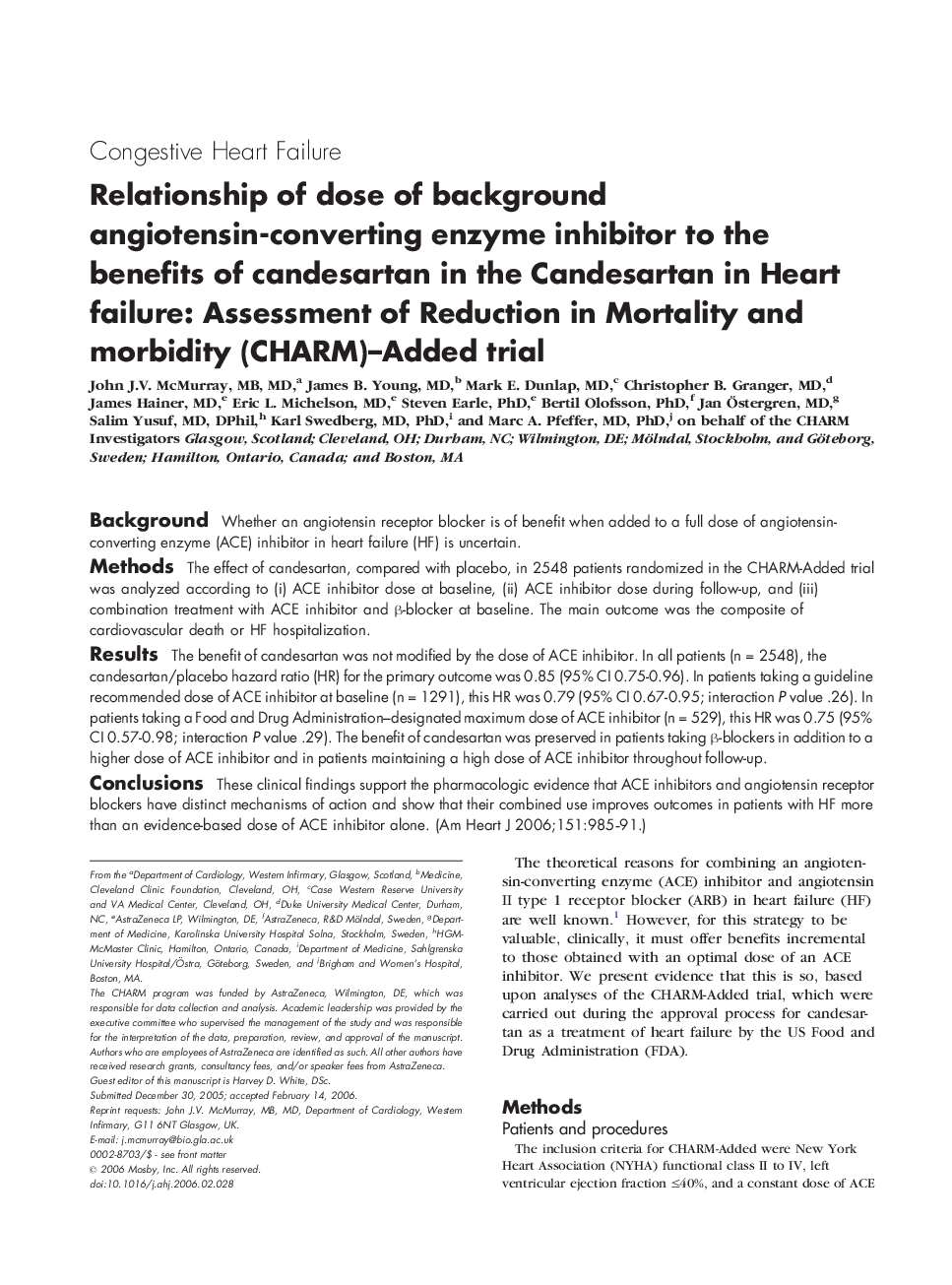| کد مقاله | کد نشریه | سال انتشار | مقاله انگلیسی | نسخه تمام متن |
|---|---|---|---|---|
| 2851173 | 1167840 | 2006 | 7 صفحه PDF | دانلود رایگان |

BackgroundWhether an angiotensin receptor blocker is of benefit when added to a full dose of angiotensin-converting enzyme (ACE) inhibitor in heart failure (HF) is uncertain.MethodsThe effect of candesartan, compared with placebo, in 2548 patients randomized in the CHARM-Added trial was analyzed according to (i) ACE inhibitor dose at baseline, (ii) ACE inhibitor dose during follow-up, and (iii) combination treatment with ACE inhibitor and β-blocker at baseline. The main outcome was the composite of cardiovascular death or HF hospitalization.ResultsThe benefit of candesartan was not modified by the dose of ACE inhibitor. In all patients (n = 2548), the candesartan/placebo hazard ratio (HR) for the primary outcome was 0.85 (95% CI 0.75-0.96). In patients taking a guideline recommended dose of ACE inhibitor at baseline (n = 1291), this HR was 0.79 (95% CI 0.67-0.95; interaction P value .26). In patients taking a Food and Drug Administration–designated maximum dose of ACE inhibitor (n = 529), this HR was 0.75 (95% CI 0.57-0.98; interaction P value .29). The benefit of candesartan was preserved in patients taking β-blockers in addition to a higher dose of ACE inhibitor and in patients maintaining a high dose of ACE inhibitor throughout follow-up.ConclusionsThese clinical findings support the pharmacologic evidence that ACE inhibitors and angiotensin receptor blockers have distinct mechanisms of action and show that their combined use improves outcomes in patients with HF more than an evidence-based dose of ACE inhibitor alone.
Journal: American Heart Journal - Volume 151, Issue 5, May 2006, Pages 985–991